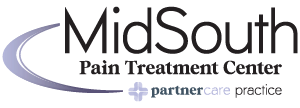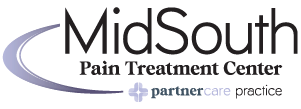Acute headaches are not life-threatening, but the pain and discomfort associated with it can be debilitating. This can adversely affect and disrupt your occupation, activities, and personal life. To that end, there are measures you can take to prevent an acute headache. If that does not work, there’s no need to fret, as there are effective treatment options available too. Here’s a look at what you need to know about acute headaches, and how you can prevent and treat them.
How Are Acute Headaches Classified?
Headaches fall within two distinct categories: primary and secondary headaches. An acute headache is a primary one, as it’s not linked to a root health condition or injury. A chronic or secondary headache, on the other hand, occurs because of an underlying health condition.
Acute headaches are the most common forms of headaches. These can be categorized into:
- Tension headaches experienced as a dull, aching form of pressure across your head
- Migraines occurring as a harsh throbbing pain on one side of your head, coupled with light sensitivity, neck stiffness, an aura, and nausea
- Cluster headaches usually located around or behind an eye
Other forms of acute headaches include brain-freeze headaches which are triggered when you expose your head to extreme cold, or when you eat something exceptionally cold that touches your pharynx and palate. You can also develop a Valsalva maneuver headache via coughing or an exertion headache. Dehydration may also cause headaches.
Causes of Various Types of Acute Headaches
The causes of an acute headache are always linked to the specific kind of headache you’re having. These are as follows.
Tension Headaches
These occur when you are anxious or depressed and your scalp and neck muscles become so tense, they start contracting. If you experience muscle tension in your shoulders and face, you could also get a tension headache. Tension headaches may also occur due to a head injury.
Also, activities that cause your head to be held in one position for lengthy periods can cause a tension headache. Notwithstanding, if you’ve been laying with your neck in an awkward position, you may develop a tension headache. Eye strain, fatigue, dental issues that cause your jaw to clench, and a sinus infection can also cause a tension headache.
Migraines
Some of the triggers here include caffeine overload, taking certain medications, stress, and consuming too much wine. You may also experience a migraine if you have jet lag, insomnia, or if you’ve slept too much.
Food additives like Mono Sodium Glutamate, pungent smells, and bright lights can also induce a migraine attack.
Cluster Headaches
These may be caused by abnormalities in your hypothalamus. You may also develop a cluster headache when your body releases too much histamine to ward off allergens.
Managing and Treating Acute Headaches via Prevention
You can manage pain associated with acute headaches by preventing and treating it. Prevent headaches by keeping your stress levels to a minimum and getting enough sleep. You should also try not to exert yourself with strenuous physical activity. Curb your caffeine intake, avoid skipping meals, and watch what you eat if certain foods trigger headaches. Be sure to stay hydrated too.
You could also prevent headaches with beta-blockers to help relax your blood vessels. Other recommended solutions include taking medicine that contains topiramate like Topamax, or Depakene which contains valproic acid.
Interventional Pain Relief Treatment
You can however also choose interventional pain relief treatments At MidSouth Pain such as:
Sphenopalatine Ganglion Blocks
With this nerve block procedure, we administer a local anesthetic to the Sphenopalatine Ganglion (SPG), which is a cluster of nerves situated behind your nose. When you have a cluster headache or migraine, nerves conveying pain signals pass via your SPG. Administering the aesthetic here hinders the transmission of pain, and therefore eradicates your headache.
Your nose is one of the least invasive ways to access your SPG. A laser is emitted via a probe placed in your nose. The probe is inserted in each nostril for just a few minutes and contains the anesthesia or nerve block that helps to reduce your pain.
The procedural risks are fairly minimal, although you may experience some form of discomfort during or post-procedure. These side effects may take up to a few hours to disappear and includes light-headedness and a bitter aftertaste due to the anesthesia. Your throat may also feel a bit numb, you may have a nose bleed, and there is a tiny risk of infection or seizure. Allergic reactions are also rare, but cannot be ruled out.
Contact us today to book an appointment for this highly effective treatment for acute headaches or speak with an expert to determine the right treatment course for you and your pain.





